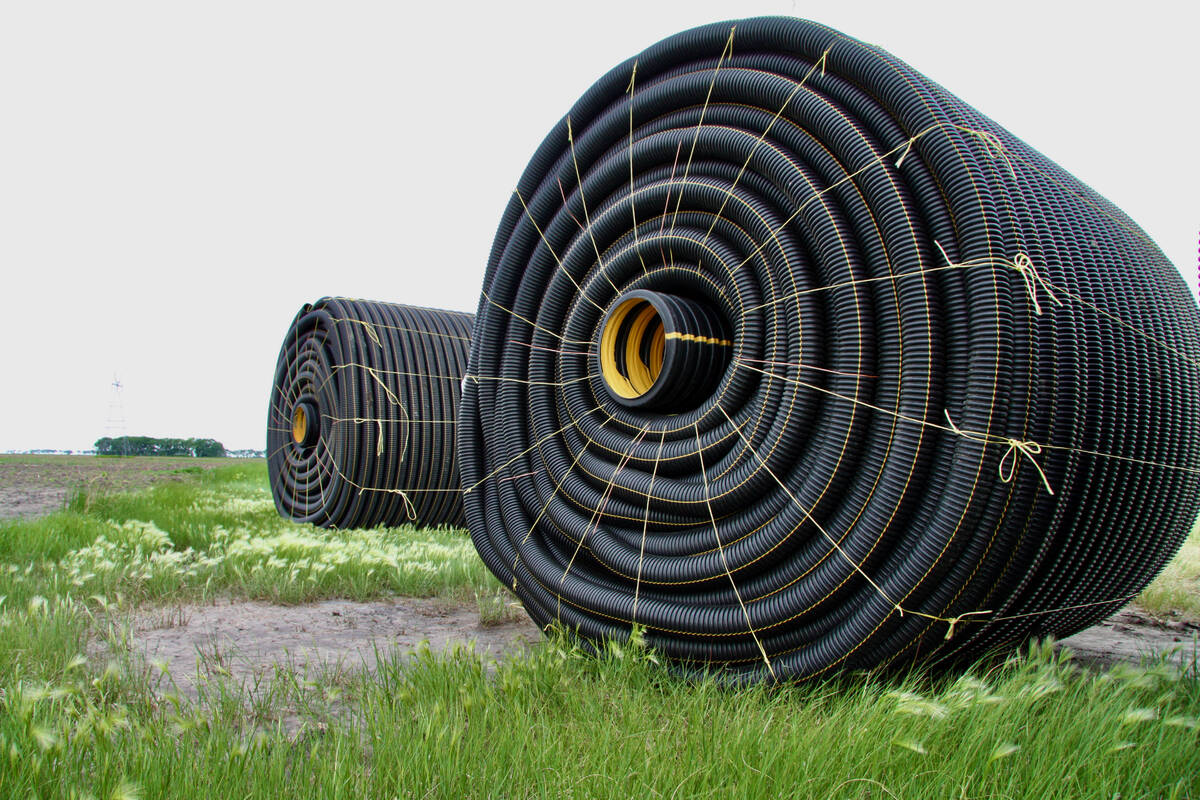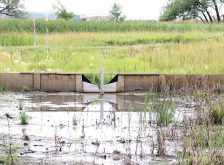Tile drainage can significantly improve soil conditions by accelerating warming and reducing compaction, allowing farmers to access fields earlier in the season, according to a University of Manitoba expert.
Ranjan Sri Ranjan, a professor in the department of biosystems engineering at the University of Manitoba, says water needs five times more heat to warm up compared to dry soil — and the only source of energy to warm soil is the sun.
“Therefore, a drained field will warm up much faster, allowing cultivation and operation much earlier,” Ranjan said during a March 19 online seminar put on by the U of M. “Even if they are planted, soil will be ready for germination much earlier [and] drained soil will be better than undrained fields.”
Read Also

Are enhanced efficiency fertilizers the right fit for your fields?
Enhanced efficiency fertilizers have been available for years now, but their uptake among farmers depends on environmental as well as logistical needs.
To optimize drainage design, Ranjan and his research team use models such as DRAINMOD and HYDRUS, which help determine the ideal spacing for drainage tiles.
DRAINMOD is a design tool for simulating various drainage systems and water management practices. It helps assess their impact on water usage, crop performance, wastewater land treatment and movement of pollutants from agricultural fields, according to the U.S. Department of Agriculture’s website.
HYDRUS, meanwhile, is a finite element model that simulates the one-dimensional flow of water, heat and solutes through media with varying levels of saturation.
READ MORE: Understanding tile drainage
“The closer the drain spacing, the faster the drop [in the water table], but the closer the drain spacing, it also costs more to install,” Ranjan says.
While narrower drain spacing improves drainage efficiency, it comes at a higher cost. Ranjan and his team tested eight, 15, 30, 50, 70, and 90 meters, and looked at relative yield.
“And for different years, you can see as you increase the drain spacing, the relative use goes down. Some years it’s worse. Some years it’s not that bad. It all depends on the rainfall for that particular year,” he says.
Control structures also play a role in managing water levels and limiting nutrient runoff. These structures, installed at tile outlets, allow farmers to regulate water flow by raising or lowering a gate.
“If the field is sloping, you might cause an uneven depth of water within the entire field. As a result, you might defeat the purpose of having a control structure,” Ranjan says. “So in this case, you may want to have an in-line control structure along the length so that water surface will be dropping at foot intervals as you go downslope.”
Sub-irrigation, which involves applying water through tile drains, is another option that is particularly effective in clay soils. However, soil moisture levels must be carefully monitored to maintain a hydraulic connection, as overly dry soil can limit water movement.
“The soil moisture in the upper layers, at least in the root zone, will control the upward flux, and the layered soil will also affect the upward flux. If you have any kind of sand lens, the upward flux will be limited,” Ranjan says.
Proper tile installation is necessary for success. Before control drainage came into play, most of the field drains Ranjan and his team worked on were installed downslope. However, with control drainage, that design is not conducive.

“In control drainage, you want the field drains to be on the contour, so that they will be evenly spreading the water,” Ranjan says.
Each control structure costs about US$600, and they only are put at the outlet, Ranjan says. To install tile drainage, the cost is around $1,500-$1,800 per acre, he adds.
READ MORE: Tile drainage can help manage nutrients as well as moisture
For Ranjan, the price is worth the important environmental benefits of control drainage, especially reducing nitrate and phosphorous exports.
“The free drainage actually exported a lot of nitrates, but most of this happened during the springtime,” he says. “Similarly, we also looked at the phosphorus export. It also happened in the springtime. The control drainage, or the control structure, actually limited the outflow of the water, thereby limiting the amount of phosphorus export.”
Before installing draining systems, a proper field assessment is necessary, Ranjan says.
“Before you put down millions in investment, it might be worthwhile to put…a water level sensor in your field and monitor the level of the water at least for one season…[then] you have a better idea how to design the system for your field.”
Ranjan hopes to do further research into how to optimize sub-irrigation in the future.
“We are trying to refine how the sub-irrigation should be operated because under Manitoba conditions, with the rainfall patterns being highly intensive rainfall followed by droughts, we need faster drainage,” he says.
















